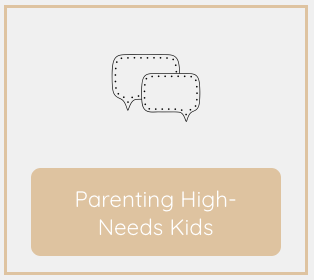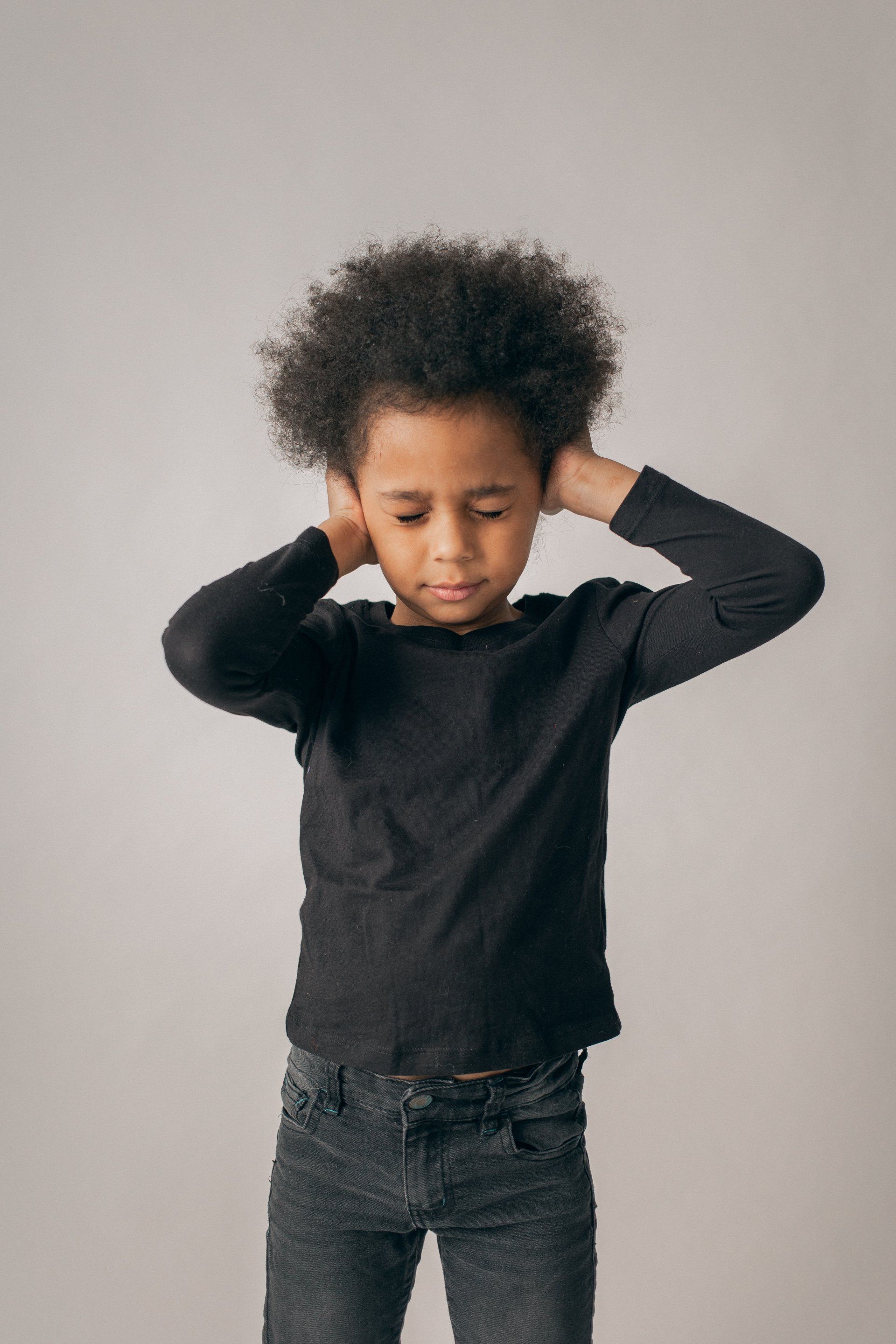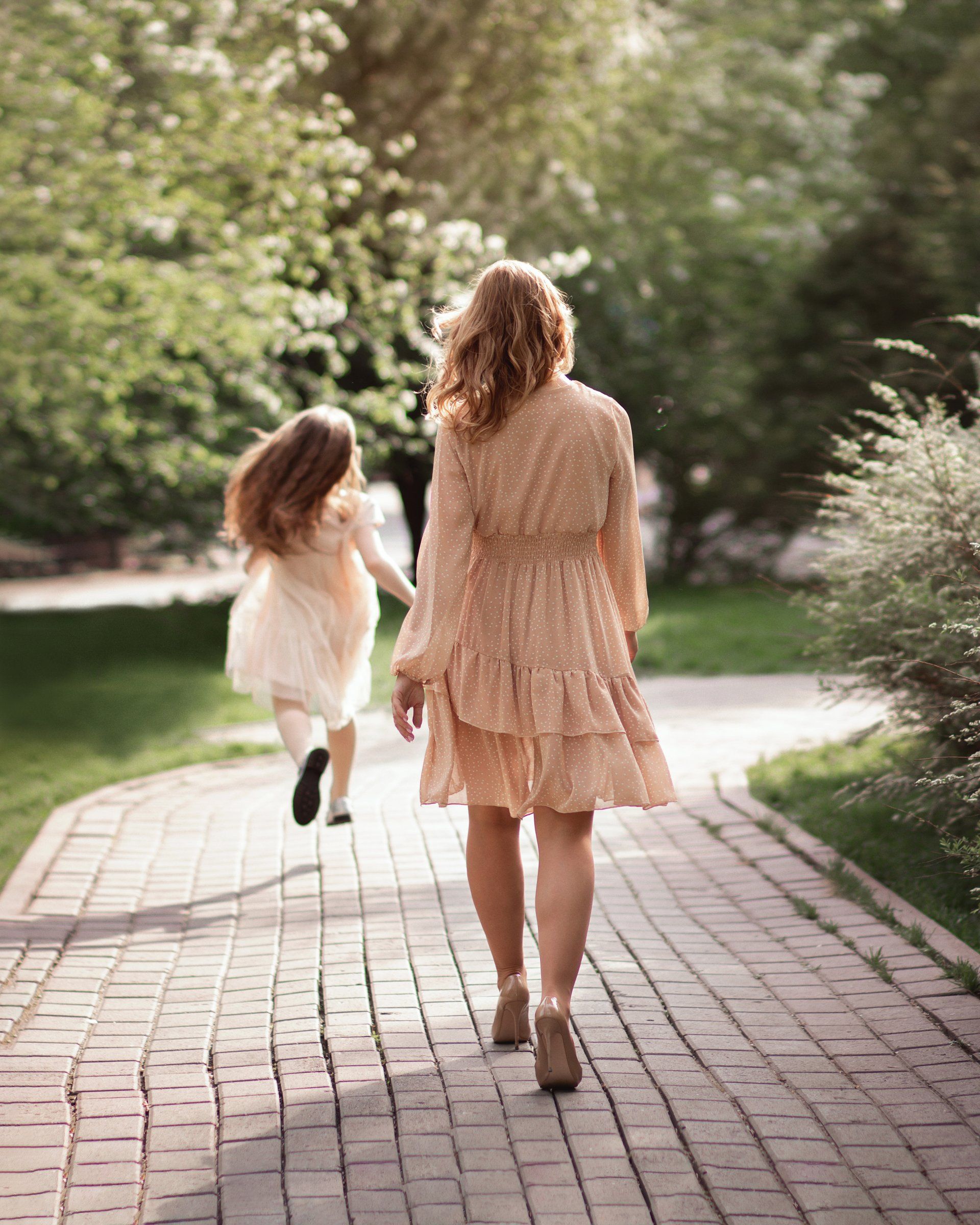Search results for 'Hacks' (39)

We feel guilty if we don’t work full time, or if we actually leave right on time (and heaven forbid, don’t come in early!), or if we’ve ever taken time away for parental leave. It makes us feel like a less-than stellar employee or that others might see us that way, which obviously takes the wind out of our sails when it comes to standing up for ourselves. So what do we do? How do we, as women, fight for what we rightfully deserve? Here are my 6 hacks to have a powerful (and effective) conversation with your boss about your compensation...

This episode is all about how to automate and how to delegate as a working mom. We're going to get to the heart of the issue, because I think a lot of efficiency or business experts talk about productivity, efficiency, automating, and delegating, kind of all in that same vein of finding trusted people that you can train and then handing things off to them and really letting it go to those people. I think that's really, really important.

If you’ve ever clicked on click-bait articles like, “Will my child be more aggressive because he’s in childcare?” or “When good nanny’s go bad: childcare horror stories,” you’re in good company. One of the most common issues I hear from working moms all surrounds the guilt and apprehension about childcare. Choosing the right one, feeling guilty that you have to choose it in the first place, or even feeling guilty that you DON’T feel guilty about sending them to childcare. We’ve all felt it (sidenote: I’ve literally never heard a dad feel guilty about this. Just saying.) But before I break down HOW to actually choose the best childcare option for your family, we’ve got to talk about the way this decision makes us feel. There’s SO much guilt around the fact that we work. Then there’s the guilt that work causes us to need care for our kids. Or the guilt that we WANT our children to have care so that we can work.

Review the AAP’s recommendations for traveling with kids younger than 12: Since vaccinations are not currently available for children under age 12, you may want to think twice about plane travel. The AAP recommends traveling by car whenever possible to limit the amount of people (and surfaces!) your child comes in contact with. Although, it seems so far the risk for severe COVID is small in children, there is still a risk.

A half a century ago, being a stay-at-home mom was pretty much the norm. Who else would care for the kids while your husband was at work bringing home the bacon? We’ve thankfully come a long way since the days when our grandmothers were young moms and currently live in a world where about two-thirds of moms with children under 18 work full-time, per the U.S. Census Bureau . This has given rise to the definition of what it means to be a working mom. However, it begs the question: Aren’t we all working moms? Even if we don’t have a fancy office to commute to, or a boss to report to, isn’t what we do every day—i.e. being a mom—still considered work? Ask any mom and she’ll likely give you a resounding “yes.” Motherhood is joyful in all the ways, but one of the best words to describe it is “work.” You may remember that survey from a year ago sponsored by Welch’s that reported that mothers work an average of 14-hour days, which translates to 98-hour work weeks. So, yeah, whether you have a job outside (or inside) the home in addition to your job of being a mother, you’re most certainly considered a working mom, and this means you should be getting the respect and the resources you need to be happy, healthy and (hello) sane! Sociologist Caitlyn Collins, author of Making Motherhood Work , said it best when she wrote, “The United States is an outlier among Western industrialized countries for its lack of support for working mothers.” We are under supported and over-utilized, which makes for the perfect recipe for burnout. Managing our personal and professional lives among ensuring that our household runs smoothly may never be something that any of us get downpat—but maybe that’s the way it’s meant to be. Maybe motherhood is meant to be a bit messy as opposed to crisp and clean, because isn’t that life at the end of the day anyways? As Dr. Whitney shares in her new book, The Working Mom Blueprint, “You can’t do everything if you want to do anything well.” Do less so you can accomplish more Sounds a bit contradictory, right? Well, that’s kind of the goal. In her book, Dr. Whitney urges families to opt for simpler ways of living—a “less-is-more-mentality” that allows us to focus more on what really matters, instead of wasting energy on finding space to store the extra junk lying around. Hey, if you have less lying around to begin with, there’s far less to have to declutter! Here are some of her declutter and “get things done” tips: #1) Use mini whiteboards to visually map out your week. This tip not only helps you, but it also helps your kids and your spouse better understand what to expect for the week ahead. Pick up some 6” x 9” whiteboards that are labeled with each day of the week. Under each corresponding day, jot down every special event, lesson, meetings, etc. #2) Work on simplifying your own calendar. As a working mom, your goal is to get everything done. But let’s be real here. Consider the areas of your calendar that you can cut—that Zoom meeting that’s just for fun but also during the exact time period where you could cross three things off your to-do list, or that across-town dance class your child’s signed up for when there’s a perfectly suitable option closer by (that’ll score you 25 whole extra minutes to do something else—or nothing at all). #3) Meal prep for the week. Pick a day of the week—i.e. Sunday—and head to your grocery store (or, better yet, order online). Try to plan out what your family will eat for the week so that you can get ahead of things and buy everything you’ll need. You can even go as far as having a meal planner outline that you keep on your fridge with a detachable shopping list to keep track of it all. What are some ways you make your life as a working mom more streamlined?

There are countless parenting sayings and cliches, but one that rings the most true for so many rookie and veteran moms and dads is “it takes a village.” Over the past year, however, this time-honored tagline was put to the test as everyone’s apparent “village” was ripped from around them in the name of social distancing and COVID safety protocols. In short, support systems aren’t—and can’t—be what they were meant to be; what they were built to be for us as we raise the world’s next generation.

In 1942, Thanksgiving became the official federal holiday we recognize today. As far as we know, no one kept a gratitude journal. No one had a gratitude practice. But our society was onto something: Being thankful, even if only for a day, was considered worthwhile enough to codify. And today, the science backs up that intuitive understanding.

Mama, I made a promise to always keep things real, so I won’t pretend that this Thanksgiving is going to be the best one of your life. I won’t try to convince you that hosting your own pared-down version of the holiday will be how you want to do things every year. But I will tell you that celebrating Thanksgiving during a pandemic is a lot like modern parenting under normal circumstances: you can survive — or you can thrive.
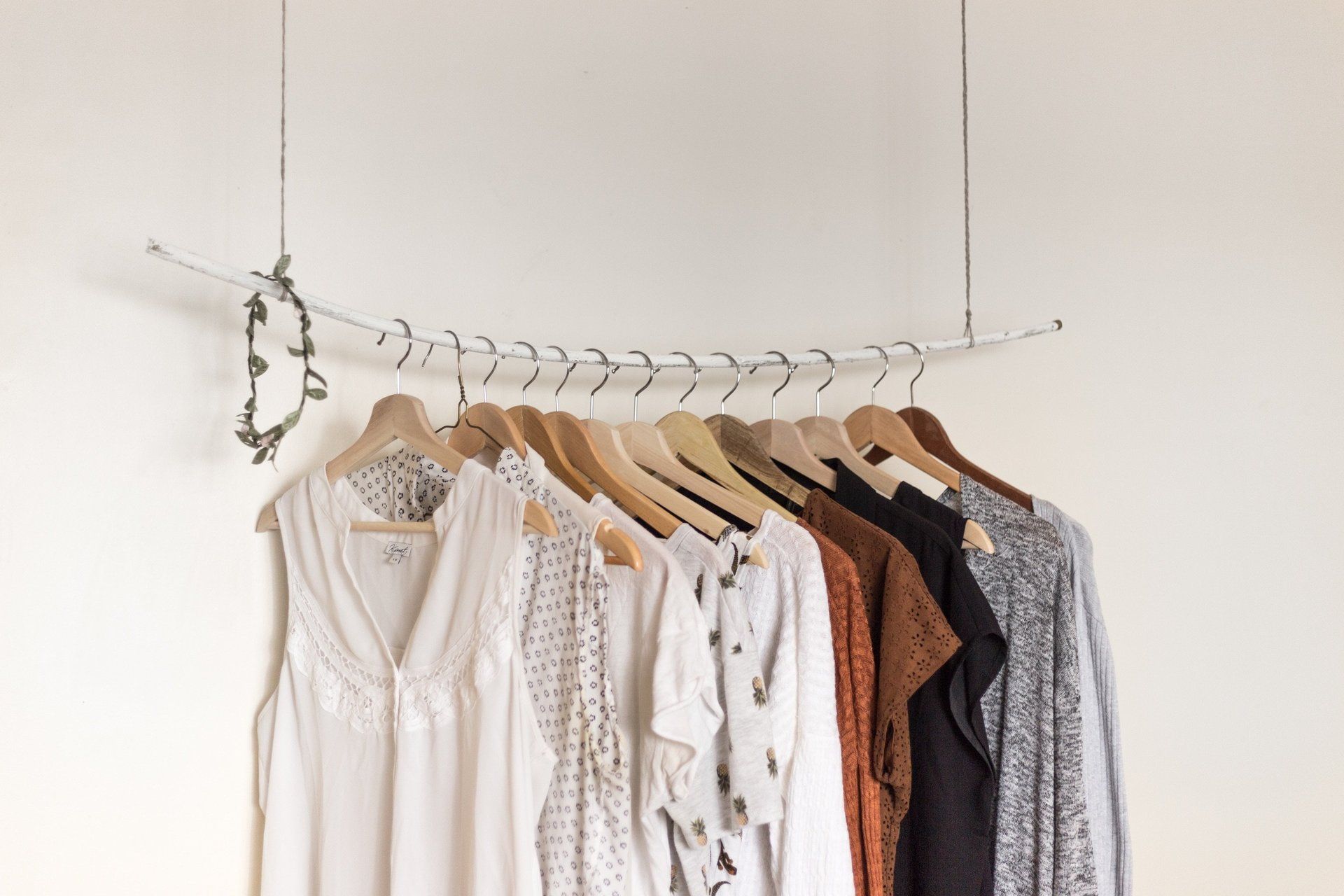
There is a sweet mom who comes to see me every few months at my pediatrics' office with her two young kids. Every time I walk into the room, she asks me about what I'm wearing. "You always look so stylish and put together," she tells me. I'm literally laughing my socks off on the inside as she compliments my personal style because there have been so many times I have NOT looked put together, especially in my early parenting days . I was the absolute queen of yoga pants, a shirt with dried breastmilk or pureed pumpkin, and a messy bun when my babies were little. Patients' families would see me at the grocery store on a Saturday during my maternity leaves and hardly recognize me. "Dr. Casares?" they would ask, quizzical. "Yep, it's me," I'd respond grinning, still messy from a full night of nursing and diaper changes. And that's how it should be. If you're in the very first months of mothering, just putting your pants on can be a challenging feat, much less trying to color coordinate a blazer and low-heeled booties. When you're a new mom, you and your baby muddling through is the most important task you have on your list. So what if the house is not perfectly clean and you're rockin' sweat pants every day? Appearances should matter least when you're learning how to keep a small human alive and yourself mentally well in the postpartum period . When it came time to head back to work, though, I knew finding a low-stress way to present myself positively to the world would matter -- not because I needed to dress to the nines or to have perfectly-coiffed hair to be accepted or loved --but because, the truth is, when we "dress the way we want to be addressed" like brand image strategist Toi Sweeney says, we can more confidently face the world (or even just the day). What Really Matters I work hard at the things that matter in life and I know you do, too. Compared with building resilience in our kids and finding joy as we parent, looking good while we're doing it barely matters. No matter how unimportant appearances are, though, it turns out they are a necessary evil. I have to wear clothes every day. I have to look professional at my job. Plus, I like to express myself with personal style, both in my home and as I show up socially and professionally. The problem is, particularly when we work, taking care of the way we look can feel like another stressful item on our to-do list. It doesn't have to be, though. Here's how to simplify your shopping & your outfit selections throughout the week: Pick a Color Palette For years, I organized my closet in a haphazard way. Over time, I spent gobs of money on items that didn't fit with the rest of my wardrobe. Now I have my clothing arranged by color. Here's my secret: I don't include every color of the rainbow. As you might imagine, my personal style reflects the Modern Mommy Doc website style and I dress accordingly, not because I have to but because those colors fit my personality and preferences. Narrowing my color palate also makes it easier for me to get dressed in the morning and makes my shopping more relaxed. I never feel like I have nothing to wear. I can easily mix and match and see where the holes are in my wardrobe.
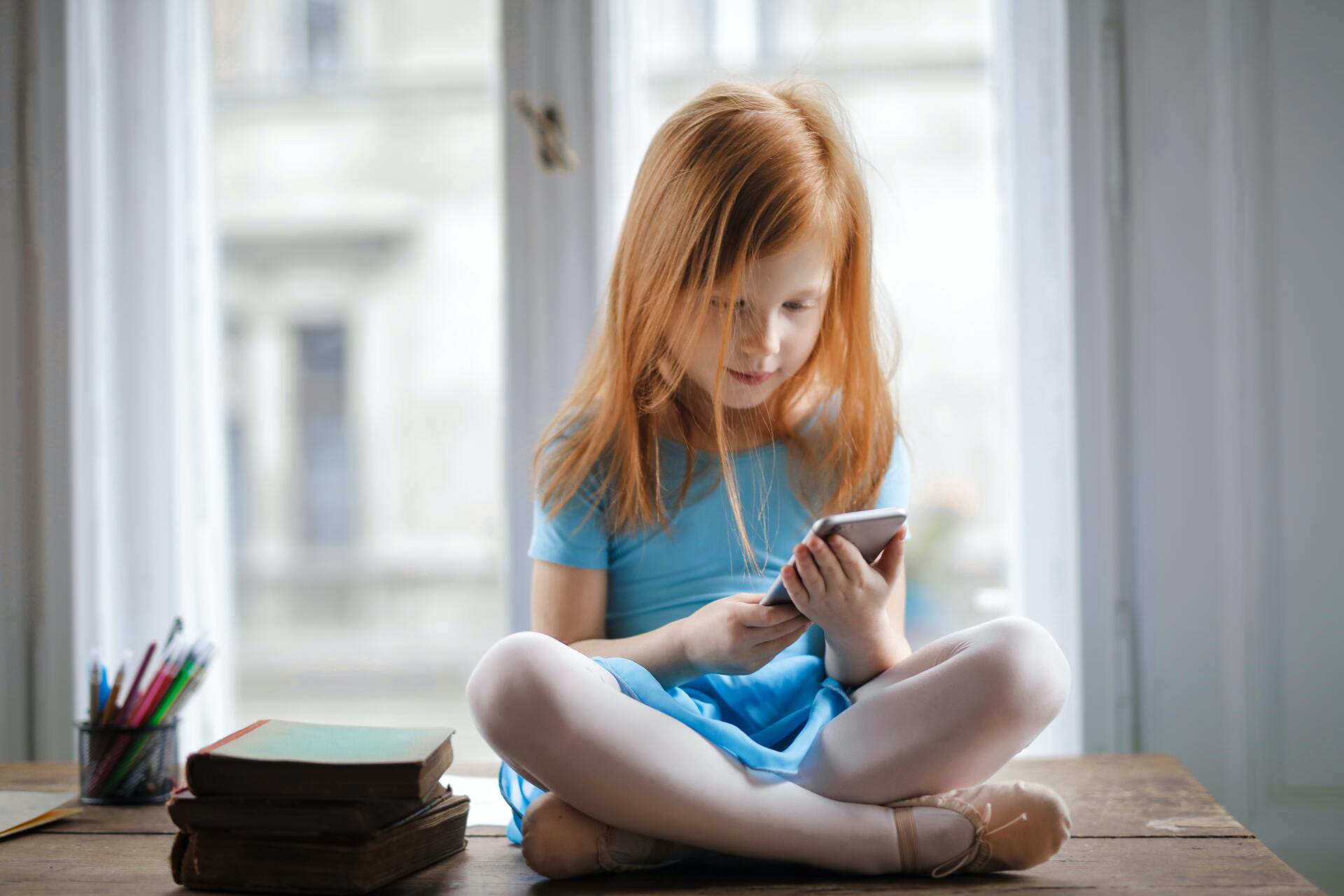
Something terrifying happened in my kitchen last week. My daughter hoisted herself halfway onto the counter and reached for a pen against the wall. On her way down, she bumped her elbow, hitting right on her funny bone. She burst into tears. That wasn't the scary part. Here's what really shook me up. As she let out her first wail and rounded into a ball in the floor, the first words out of her mouth were, "Mama, can I watch a show?” Seriously, like mid-scream, the absolute first thing that came into her mind was not physical comfort or emotional support, or even some verbal proclamation of pain. It was TELEVISION. She's never had that kind of Pavlov's dog reaction before to an injury (thank goodness) and, at first, I kind of brushed it off, but then I started thinking more and more about her relationship with screens and about our current culture of quick-fix distractions and personalized, immediate conveniences. Screentime and Our Kids It would have been tempting to blame the TV—the device itself—for my daughter’s behavior. I can't count the number of times I've rattled off recommendations in my pediatrics clinic about limiting the total amount of time per day parents let their kids use their screens or made suggestions about caring equally about content versus total screen time. Families seem to get that too much and the wrong kind of screen use is bad for their kids. I practice what I preach, too, most of the time—more science shows, less Sophia The First, a heavy emphasis on learning and positive social skill building à la Daniel Tiger. This, though, was a different part of the technology revolution I'd never even stopped to consider: not only was I letting my child be entertained by screens, I was letting my child be comforted by screens, too. The screen was a proxy for a bigger, societal problem. See, we live in a world where it has become incredibly difficult to say “no” to our children because we have so many ways we can say “yes.” Over the first post-millenial decade, the cultural norms around how we navigate our daily tasks have so dramatically changed. There’s increasing pressure on parents to have 1,000 convenient-but unhelpful-ways to keep our kids happy. The Tech Culture of Convenience has rewoven the task of raising children. "Our culture, in large part, has been influenced by the technological revolution—a series of amazing advancements that have modernized everything from shopping to scheduling doctors’ appointments. But has it all been for the better? It turns out kids who grew up with the technological coming of age (typically born in the early 2000s—the iGen Kids (or GenY Kids)—are struggling as a result of it," says Dr. Kristin Valerius, a child psychologist and director of Sundstrom Clinical Services. The Evidence: The research backs her up. First of all, it shows heavy childhood screen use is ubiquitous: “…Members of this generation are growing up with a smartphone, have an Instagram account before they start high school, and do not remember a time without the internet. The Millenials grew up with the web as well, but it wasn’t ever-present in their lives, at hand at all times, day and night. iGen’s oldest members were early adolescents when the iPhone was introduced, in 2007, and high-school students when the iPad entered the scene, in 2010. A 2017 survey of more than 5000 American teens found that three out of four owned an iPhone .” said Dr. Jean Twenge, a psychologist and researcher, in her 2017 The Atlantic article. Twenge has been analyzing adolescents’ levels of happiness and wellbeing across generations for over 25 years using the Monitoring the Future Survey. The survey, conducted since the mid-seventies, asks 8th, 10th, and 12th graders about their self-esteem, life satisfaction, and daily activities like tech use. Kids, of course, have always had fluctuations in happiness from year to year but in 2012 something astonishing happened: well-being dropped off dramatically. Not just a little drop off. Like, drop off a cliff drop off and it stayed that way. After 20 years of relative stability in overall happiness, life satisfaction, and self-esteem, it went downhill fast…and never recovered. It didn’t matter the kids’ financial situations, they—across the board—seemed to be having a harder time. “In all my analysis or generational data—some reaching back to the 1930s—I had never seen anything like it," Twenge said in that same 2017 article in The Atlantic . Of course, no single event, including the advent of pervasive, individualized technology defines a generation. But the dual increase in mental health concerns and media use seem to be strongly connected. We know that factors like heavy social media use, texting, computer games, and accessing the internet are not the keys to a teen’s happiness. In fact, studies show heavy screen use is actually associated with decreased happiness, whereas things like sports and in-person social interactions are associated with improved life satisfaction. So, what happened in 2012? Technology with its apps, and devices, and new ways of doing everything became fully infiltrated, that’s what happened. In 2012, the year of the huge drop-off, the proportion of Americans who owned a smartphone surpassed 50 percent. Between 2012 and 2015, the percentage of iGen Youth with smartphones went up from 37 to 73 percent. By 2016, 89% had devices. The changes Twenge saw were not based on ethnicity or on social-economic status, nor suburban or rural location. Across the board, no matter what their demographics, suddenly teens were living on their smartphones. “I don’t think (we have a problem) because 89% of kids are on their devices,” says Dr. Valerius. “If that were the case then just taking the phone would solve it—but that doesn’t. I believe device usage is a proxy measure for how ubiquitous the individualized convenient way of doing things had become. And in reweaving the task, our parenting job became harder, our kids missed out on important developmental tasks, so that by the time these iGen were teenagers circa 2012 they were showing the stress-fractures of growing up in this Brave New Tech World.” Everyone talks about how screentime is bad, that devices are bad, but Dr. Valerius thinks that misses the point. By focusing on device-use, we keep parents focused (and yelling at their kids) for how often they are on that device instead of focusing them on how many ways they need to help their kids navigate life…and it keeps parents focus away from themselves and why they are feeling so much pressure to just satisfy their kids at every moment.) What's REALLY So Bad About Kids Using Screens It seems we all use our smartphones 24-7, our heads bent down over a small screen, our fingers moving in a perpetual scrolling motion. Deep down, I think we're aware it's probably not the best thing for us, no matter what our age. But is there something specifically bad about personal device use for our young kids or for our parenting? YES. When we allow technology (and any other knee-jerk easy solutions) to soothe and entertain our kids, we replace patience with immediacy, we limit our kids' abilities to deal with negative emotions on their own, and we give quick-fix, personalized solutions to boredom, reducing our children's abilities to handle less stimulating environments. We take away the opportunity to develop grit. As a working mom, my family time is limited throughout the week. In the evenings, I'm tired. On the weekends, I'm always hoping for reduced stress, but with two little ones in tow, that's hardly ever the case. Nothing is worse than coming home from an exhausting day at work only to be inundated with tears and squabbling and strife. It’s extremely hard for modern, stressed-out families to "just say no" to letting screens parent our kids in the name of peace and harmony, but I firmly believe that we have to be fully aware of our choices if we want our children to be resilient and our parenting to be successful.

For the past month, my entire family has been battling winter and eary spring illnesses. First my five-year-old woke up with a wet cough that lasted three weeks and prompted phone calls from the school nurse. Then, my youngest caught the same bug and ended up with a secondary ear infection four days later. My nanny followed suit in what seemed like 48 hours: she let me know with a 5 a.m. text that she had pink eye and couldn’t see, much less take care of my kids, for a few days. Then a round of stomach flu came through, knocking down almost all of us in a slough of vomiting and diarrhea episodes that severely challenged my cheap Target sheets and forced us to buy multiple sets of new pillows. The pièce de l résistance came when I awoke one night to my oldest child LITERALLY vomiting onto my hair from where she was sleeping behind me. Thank goodness we just took a vacation, resetting the sickness cycle in our home, but I’m just holding my breath waiting for the next round of illnesses to start up again. Worrying about a sick child is one thing but, when you’re a working mom, the additional stress that comes with navigating care logistics for that sick child is quite another. As a pediatrician, I see how completely devastating illnesses can be for moms when it comes to maintaining their own presence in the workplace. And, while sometimes kids really are so unwell that they need constant supervision and isolation to get better, a lot of times parents don’t realize that there are tricks many of us use with our own kids to get through sick season with a little more sanity. Here are my top strategies for dealing with winter and spring sickness worries: Stay Away From Sick People Not all illnesses are avoidable (you read what I just said about the last month at my house, right?), but environmental factors do play a role. A kid that goes to indoor play facilities (like a children’s museum or indoor play gym) multiple times a week will be more likely to catch whatever viruses are floating around there. I’m serious—I swore off almost enclosed shared play places during peak sick seasons once I went through one winter with my first child. Anything with “Children’s” in the title is a no-go for me during peak winter weeks. I’m not a shut-in, I just pick and choose activities based on the scientific fact that more kids plus more germs equals more chances of your kid getting germs, too. During sick season, I opt for outdoor snow activities, pottery painting studios, and smaller gatherings. Knowing full well you can never completely avoid illness, I try to at least play the odds correctly. Likewise, a kid in daycare will be exposed to more germs on a daily basis just due to the sheer number of other children they’re around. Yes, over time that can contribute to a stronger immune system but, for some (especially those gentically predisopsed to specific conditions like ear infections) it can mean a world of hurt every winter. In my office, we sometimes refer to the constant runny nose we see in our daycare patients as “daycare-itis”, since it seems like it never, ever goes away. Every child is different—some kids seem to skate by without a cold or rash—but it is a recurring theme. It’s not that the choice to do daycare versus in-home care is better or worse—Lord knows there are about a billion other factors to consider wehen you make that choice (like money)—but the sickness factor is a big one. Even though a nanny or smaller in-home setting can seem more expensive on the surface, your cost-benefit childcare analysis should also account for potential days of work missed due to your child’s illnesses if they’ll be in a group care setting. In my profession, it’s not impossible to take a day off but it is a huge inconvenience to my patients and to my business partners. So that I can avoid missed work days, I look for ways to avoid my kids catching major illnesses in the first place. Be a Bit More Vigilent There are a few basics of good health that every parent knows are important but, if you’re a working mom, these things are critical: Wash Those Hands! Parents often spend a ton of money on fancy, cold-busting vitamins and supplements, but the best way to prevent catching most germs is free: hand washing. Teach your kids to thoroughly scrub with warm, soapy water for at least 20 seconds each time they wash and to head to the sink before meals, after using the bathroom, and after they cough or sneeze. Keep Your Febrile Child Home There is a (very good) reason most child care centers and schools have a policy that students should stay home if they’ve had a fever within the previous 24 hours: when a virus or bacteria attacks the human body, fever is part of the body’s attempt to fight back. Schools and care centers don’t want kids hanging out in classrooms while the illness battle is still raging, as the bacteria or virus may make its way to another student in the process. Instead, use the time at home to help your child focus on fluids and rest so he can re-enter care ready to learn and play. Teach Your Child About the “Cough Pocket” When you sneeze or cough, little virus or bacteria particles go shooting through the air (I know, science is kinda gross, but it’s also kinda cool). They can travel up to 50-200 miles per hour. In an ideal world, kids would catch all those nasties in a piece of tissue, but youngsters often don’t have that much foresight. Be practical instead. Show your child how to make a cough pocket with his elbow. Don’t be surprised if this takes quite a bit of reinforcing. Good habits take time to ingrain. Attend to the Basics Our bodies avoid and fight illnesses best when they’re in prime shape. Eating a healthy diet rich in vegetables, fruits, and whole grains sets kids up for health success. Give your kids plenty of exercise and water, focus on healthy sleep habits, make sure they’re up to date on all their vaccinations. Get a Back Up Plan in Place When people ask me how I get everything done in my life—professionally, personally, when it comes to my kids—I always have a simple answer: Back Up. Help. Listen, Murphy’s Law seems to apply even more strongly when you have multiple balls you’re juggling because there are more chances for things TO GO WRONG. When I hear celebrity or CEO moms talk about how they do it all because they’re organized or because “somehow they just make it work,” I want to scream. It’s a lie—one that makes mega millionaires feel better about themselves but that makes the rest of us feel like we’ll never measure up or that we must be doing something wrong. It’s like they’ve photoshopped motherhood right along with their Instagram pages. Here’s the real truth: I get everything done because I have other people who help me do it all—when my kids are well AND when they’re sick as stink. Childcare Providers My first line of defense is my nanny. Yes, just like any other good mama, I feel guilty as all get-out when I think about my kids sick at home with a caregiver while I work. But, then I remember (when it comes to my nanny), THAT’S WHAT I PAY HER TO DO. She’s not just there for the trips to the zoo and the tea parties. She’s primarily there to care for my kids when I can’t be.
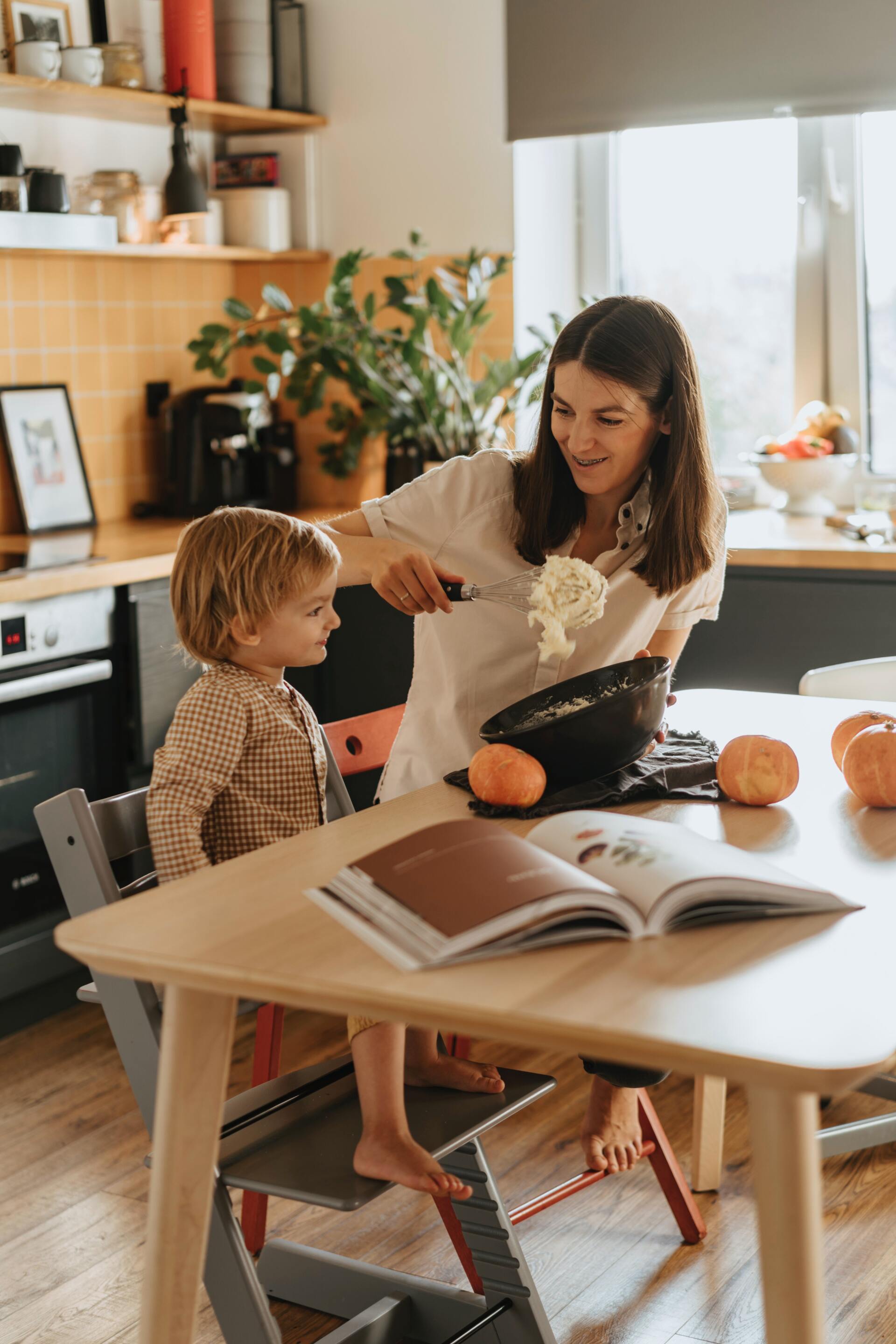
Patience. It’s hard when you're a parent. I don’t just mean when it comes to handling baby blowouts and toddler tantrums, though Lord knows those moments will test most any mom. Practicing patience is the hardest when it comes to the hurdles we wait for our kids to move past, for the milestones we worry they’ll never achieve. Just like being okay with the stage of motherhood we're in right now is a huge challenge, so is being okay with the stage of childhood our kids are in at this moment. I thought long and hard about my perspective on developmental leaps and setbacks this week. In the course of just a few days, we had milestone breakthroughs for both of my daughters—one simple, one monumental: Parenting Milestones First, my two and a half-year-old started pooping on the potty. She just walked right into the bathroom, climbed onto the toilet, and an announced, “I’m a big girl! Now I’m ready for preschool.” She had been using the toilet to pee like a champion for a few weeks, earning stickers left and right. Suddenly, though, without any prompting or prodding, she was fully underwear-ready. No big deal. Simple. Easy. I’m pretty sure I was way more excited than she was, given I immediately started counting up dollars saved now that I only have to buy enough diapers to cover naps and nighttime sleep. Next, the monumental event came to pass (I'll just go ahead and warn you, it's not going to seem monumental to you at all): my five and a half-year-old looked me straight in the eyes and beamed. Yes, she has smiled before, but this time when she did it she was dancing, leaping across the floor of the school gym with an audience of peers and parents at 9:25 on a Friday morning. No big deal. Simple. Easy. Right? Wrong. There was a time I held that same anxious daughter in my arms while she watched all the other kids she knew enjoy soccer or dance or swimming, terrified something horrible would happen to her if she gave it a shot. There was a time I wasn't sure if her fearfulness would allow her to make it in social or classroom settings. There was a time my worries about her worries completely overwhelmed me. So to see my baby walk confidently in front of a room full of moms and dads and flash me a thumbs up before she pliéd across the floor made me all weepy with pride. It’s not that I care if she dances specifically (actually, long term picking some less perfection-driven passion may serve her better), it’s that I care that she’s beginning to develop some resilience and maturity. She’s growing up . As I look back at what helped her get so big and brave this week, I’d love to pat myself on the back for perfectly parenting my anxious child up until now. I’m sure my pediatrician-level understanding of the brain and the help of several psychologists along the way helped, but in the end, she did it all on her own. The biggest lesson I learned this week? Often times we bang our heads against the wall for months (or years) trying to move our kids in the direction we hope they'll go but, along with our parenting prowess, leaps in development (and beyond fears) usually happen because our kids' desires to experience something awesome outweighs the potential risks they perceive in that activity. In short, joy has to overpower trepidation for them to move forward. When they finally take that leap, it reinforces how amazing it can be to take a chance. My incremental work over the past several years to move her past her worries mattered but that it was just the foundation: her own excitement over being a part of this particular class performance is what pushed her over the edge. Every parent has their own moment when they feel at odds with their kids' progression through a particular developmental challenge—moments they can’t change because they’re not meant to be changed, they’re meant to be waded through or waited for. We can worry our way through them, we can internet search our way through them or we can, after checking in with professionals and advisors we trust, just sink into them. For most modern moms I know, worrying is the default when our kids don’t get to whatever’s next quite fast enough, be it a developmental milestone, a social leap or a move toward independence. Anxiety defines our parenting generation. I'm not sure we can help it—we have a constant influx of information, a steady diet of dissidence on almost every topic (including parenting philosophies), a billion to-dos, and conflicting commitments. We’re stressed , not just about our kids but about our own lives. Sometimes we forget that, even if we're going a mile a minute, and it feels like our struggles should hurry up and get with the picture, too, they cannot. Some things, especially the most painful things, just take their own sweet time. Worrying about them, although it feels productive, just makes them take even longer to pass. "Aha" Moments Nine times out of ten, my "aha" parenting moments have some element of, "I'll do it differently next time," but not this one. This one was about letting things happen like they're supposed to, waiting for the rain to stop pouring down until the sun comes out again. If you're in a tough spot—either with your kids or with yourself—remember: time makes most things better. After you've worried and worked to find a solution, take a second to decide you may have to just get the support you need, take breaks, and wait a little longer. Confidence begets confidence. Yesterday, another breakthrough on a cloudless blue sky day. Suddenly, my timid little girl is yelling, “Superspeed mode!” as she careens down the sidewalk on her bike, shedding her hesitation to ride solo from just a few days prior. “I’m building up my stamina, Mama!” she calls back to me, her hair a stream of sunlight as she pumps her little legs and grips the handlebars with all her might, so sure of herself and her newfound strength. My heart is pumping fast, too, as I run to catch up, beating harder from relief and release than from anything else. A million things I've held onto, a million things I've had no control over, a million things that have to just work themselves out. Let me remember this next time I'm feeling stuck: growing up, leaps and setbacks and all the mucky stuff in-between. It's all part of it. Have patience. Don't rush it, mama.

I just got back from a four-day trip to "The Happiest Place on Earth" and people, I was not entirely sure before we took off if it was going to be that happy. My oldest daughter has an anxiety disorder and gets overwhelmed easily by crowds and chaos. My youngest daughter is three years old (enough said). I can hear you saying right now as you read this, "Um, excuse me...Why did you plan this trip?" Fair enough. Here's the thing about parenting a child who needs special accommodations or has special needs: you understand that there are some activities and experiences that they may never be able to participate in but you long for them to be a part of the world just like all other "typical" kids. I knew that if we could reduce the number of stressors we had on the trip, we could give her the opportunity to experience the magic of being enthralled and delighted. Here's what we did to make the trip successful and what you can do, too: Give Yourself Enough Time It's so tempting to rush through our vacations but, when we do, we usually end up feeling run down and frustrated. When you have a child who may not be able to roll with the punches on a road trip or push through for a marathon day through an amusement park. For our Disney trip, we planned to be in the park for three days and gave ourselves an extra day at the end of the trip to hang at the hotel pool and enjoy the waterslides. We knew my oldest daughter would reach a certain point in the day as we traveled from ride to ride when she would literally melt. And we knew it would happen at the drop of the hat. We might be able to cajole her into sticking around for five minutes longer than she wanted to be there but once the, "Mom!! We have to go!!! Please now!!" set in, it would be all over. We also knew that moment would also make us feel very angry that we'd just thrown down 40,000 frequent flyer miles and $1,000 in park entry fees on this trip if we were on a tight timetable and no one was sticking with it. Because we were feeling leisurely, we didn't try to rush out for Magic Morning, and we weren't worried about grabbing Fast Passes. Instead, we woke up when the kids did, enjoyed a hotel breakfast, and even came back to our accommodations mid-day to rest and relax before some or all of us re-entered the park in the evening. We spent TWO (yes TWO) hours in the Bibbity Bobbity Boutique (thankfully, we'd asked for gift cards at Christmas to cover it) on first day in the park and, believe me, it was my girls, not me, who wanted these glamour shots. The second day, my oldest daughter pooped out after about three hours (even with a stroller, which I HIGHLY recommend for any trip to any amusement park with kids under 7) and she and I hoofed it back to the hotel and spent the rest of the day on the waterslides while my husband and three-year-old went on "It's a Small World" over and over. Which brings me to my next point... Accept It's Not About You Disneyland is fun for kids and adults but, if you're going with littles (and one or more of those littles has special needs), either bring help or ditch any preconceived notions you'll be zipping through the Matterhorn or noshing luxuriously at the Blue Bayou. We met my in-laws in the park on the second day so we could divide and conquer a bit but, even then, we had to check our adult agendas at the door. Yeah, we did a little bit of ride-switching here or there so we could both enjoy rides our youngest wasn't tall enough for but, in the end, understanding this was a kid-centric vacation made it more enjoyable and less disappointing. Use the Services Available to You About a month ahead of our trip, my sister-in-law sent me a text with information about Disability Access Services. My daughter's anxiety disorder doesn't have any physical manifestations so the idea of accessing any type of special services felt off at first but, holy cow, I don't think we could have managed without them. Using the pass, we were able to get return times for many of the more popular rides, avoiding waiting in long lines in the hot sun with a temperamental three-year-old and a six-year-old who kept asking, "Am I going to die? Are you sure? I think I might" as she waited for her turn on Splash Mountain. Keeping the moments she had to a minimum between when she built up enough courage to say "yes" to a ride and when she actually buckled in meant a higher rate of success. Even with the pass, she ended up changing her mind after about 20 minutes into the wait for Pirates of the Caribbean and meeting the Shadow Man turned out to be a no-go. Understand That No Good Vacation Goes Unpunished When you go on a major family trip, injuries and sickness are just a part of it. My little one ended up with a sinus infection the first night and gooey eyes to match by the end of our journey. My eldest had a few scrapes and bruises from the water park. I was glad I'd brought a little first aid pack and, again, had some downtime built in to our travels. Likewise, brace yourself a little for some sleep deprivation and some minor illnesses once you come back from your vacation. If you can, plan ahead so you have a recovery day at the end of your adventure to just catch up on laundry and get the house and yourselves back in order. Anticipate you might have to use your down day to tend to things you forgot to take care of while you were away or that came up when you returned. Looking for more tips for traveling with young kids? Listen to our latest Podcast with Brianne Manz of Stroller in the City here.

My husband is not doing what I need him (want him) to do fast enough, the way I’d do it, or with the same level of intensity I think it requires. He’s putting it off, waiting ’til the last minute, choosing to watch a show on the couch with his feet up and his stinkin' craft beer in hand instead of jumping into action. We've got a lot to get done before tomorrow hits and my mental load is piling up while his seems to be shrinking. What’s so pressing? Making a five-year-old’s lunch. Yeah, I’m all worked up over packing turkey and cheese into a hot pink lunchbox for my daughter’s school day. I asked him to do it about an hour ago and there’s still a loaf of cheddar on the counter with no other signs of progress in sight and it is irking me to no end. It’s not the first time I’ve gotten all up in arms over something completely insignificant and it’s not the first time we’ve had tension over shared responsibilities and division of labor. A fifteen-year marriage, two kids, two (plus) careers, and a 30-year mortgage puts pressure on even the best-intentioned partners. And, as my husband and I sort out how to balance our own individual needs and desires with the needs of our family, there’s often some dissonance. The more I talk to other moms—especially working moms like me—the more I find a common struggle to be a modern mom in relationships that are still in the process of becoming modern. Modern Partnership Struggles Here’s what I mean: my husband and I both work full time. I plan the meals, buy the clothes, do the laundry, sign my kids up for all the activities, make sure the school projects are completed. My husband does A LOT (far more than making simple lunches), but when it comes to our house, our lives, and our kids, I take on the mental load. I’m not whining, I’m just stating facts. Women still do more unpaid household tasks in most households, even if they’re primary breadwinners like I am. Turns out gender norms may be changing in the workplace relatively rapidly but, on the homefront, things are often still a little archaic. My partner is a caring guy who wants the best for our family and who values equality and teamwork. He’s all both of us pursuing our passions and working together to support our kids, but he and I still somehow struggle, no matter how modern we’ve tried to make our marriage. Blast From The Past I mean, just a generation or two ago, our life would have seemed ludicrous to most. Our parents and their parents all divided tasks, generally, along gender lines. That wasn’t always fair, and it definitely left women without opportunities and options but, when it came to relationships, it probably was at least less confusing. You do this (childcare, housework, home life) and I’ll do that (work at an office). You still see vestiges of the old mentality whenever multiple generations gather for holidays or in social settings. Almost every month in my office some sweet grandma will come along to the first newborn check-up, smiling at her son as he changes his baby girl’s diaper with swagger. “He’s such a good father, isn’t he?” she asks me. If by that she means he is able to perform some basic tasks related to keeping a child from getting a urinary tract infection, then YES, for sure. And, when I see the dads beaming from the praise, I just smile back and nod. But, the reality is, helping with a few diaper changes isn’t going to cut it for the “Dad of the Year” award anymore. Most moms I know expect more than that in this day of age. Modern-Day Dads and Mental Load I’m not bagging on modern-day dads (I'm also not saying all family structures or family struggles are the same—far from it—or that all dads are even the same). In fact, I feel kind of bad for modern dads. I mean, not as bad as I feel for modern-day moms. But I do feel bad. It seems like, when we empowered women to be just as fierce in the workplace as at home, forever changing modern-day motherhood, we forgot about educating men on how to change their perspectives on modern-day fatherhood. We figured they would just adjust without any effort or preparation, magically skilled and knowledgeable in all things baby or toddler. We wrote them hardly any books and developed hardly any support groups or resources for them on the topic. Add in the Mr. Mom monickers and the media depictions of helpless new dads fumbling through parenting — it’s a not a surprise a lot of dads I see aren’t sure exactly where they fit into the new parenting paradigm. By the way, before you send me a note describing how your partner is the bomb and has it all together and doesn’t NEED books or resources, please realize I meet tons of amazingly-talented fathers every day who are killin’ it in the modern dad department—I know not all dads’ struggles are alike, just like not all moms’ struggles are alike.
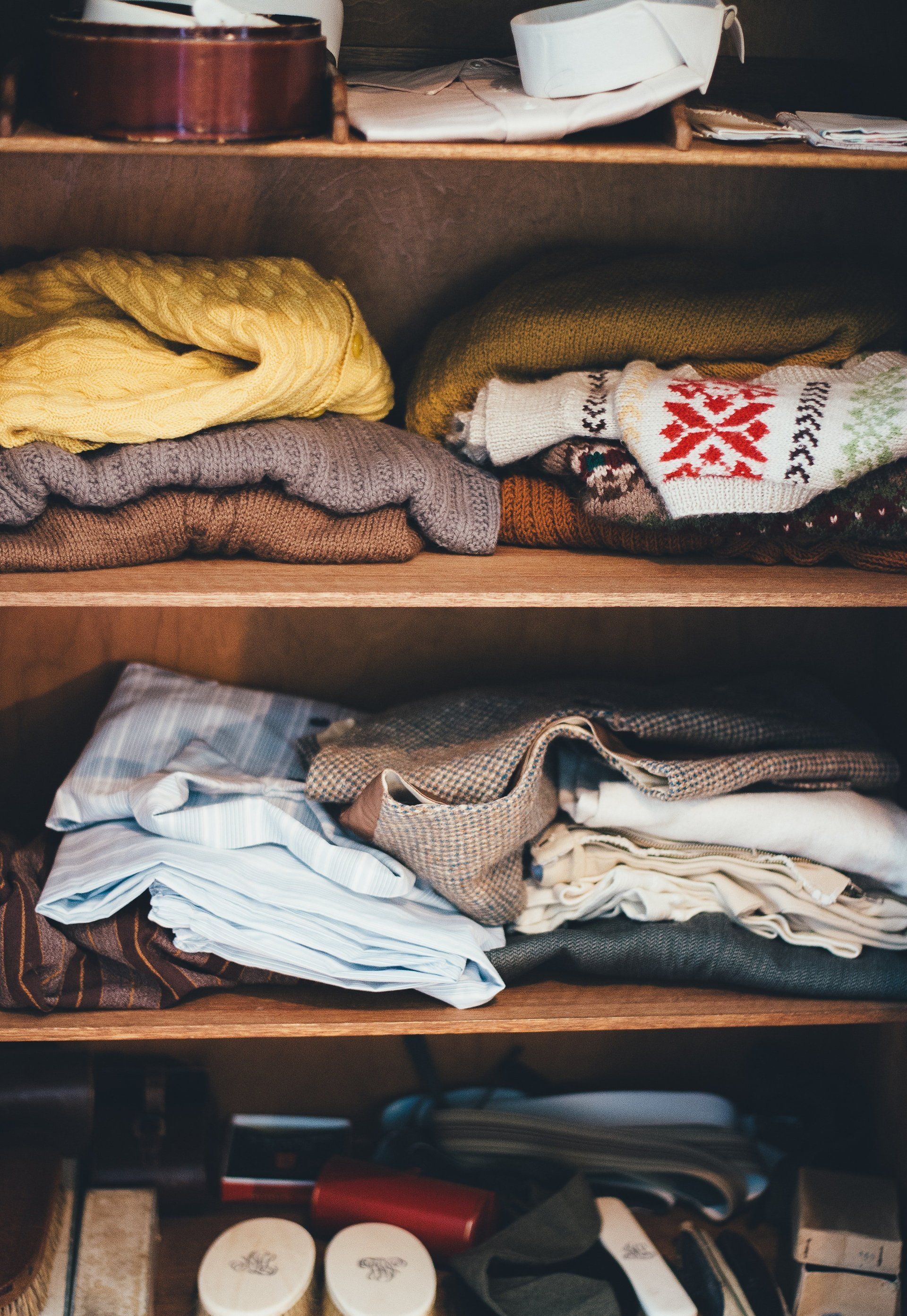
MOTHERHOOD LESSONS FROM NETFLIX: HOW TO GET YOUR HOUSE MORE ORGANIZED AND YOUR LIFE LESS COMPLICATED
I’ve been watching a lot of Netflix lately. Scratch that. I’m kind of always watching Netflix. This month, though, is January—a time for New Year’s resolutions and mommyhood goals. So, as I sat watching my nightly dose of Netflix last week, I came across a new series: Tidying Up . If you haven’t heard about it yet, you probably will soon. The main star, Marie Kondo , is like the guru of keeping all things organized. I started watching the show because, well, hey, I could use some tidying tips just like all the other moms I know. It definitely delivered. I learned a whole new way of folding (basically fold all your clothes into little rectangles, organize vertically when possible, and put like shapes or sizes together), but by episode 8, the key to Marie Kondo’s success with struggling families was clear: you need less stuff than you think you do and you’ll be able to enjoy your life more if you only have to take care of the things you really cherish. Marie’s secret to success, which she says so often you start to get a little nauseated after you hear it enough, is to choose items in your life that “spark joy.” Like I said, it’s a little cheesy, or at least it seems that way on the surface. Somehow though, as you watch these families part ways with their unnecessary clutter and start to truly enjoy their belongings and their spaces it’s almost, dare I say, tear-jerking. Episode after episode (don’t hate on me—I didn’t have work the next day when I started watching and I love a good TV binge session from time to time), you watch people get back to what they intended for their families, for their homes, for their lives. It gets real deep real fast, people. Of course, that next weekend, I started doing a modified version of the KonMari cleaning method. I went through my house category by category, parting with the excess, neatly folding and arranging. Marie actually recommends that you thank each item—I tried my best, but failed after a few hours. My house WAS definitely cleaner and calmer. It wasn’t perfect—with two kids under the age of six trailing behind me pulling freshly-sorted crayons and toys onto the carpet behind me, it’s never going to be—but it was better. Probably more important than that, though, was the mental process I went through. I learned so much by analyzing, piece by piece, item by item, what I really needed and what was weighing me down—what things I didn’t even really care about but just kept picking up and putting back on a shelf over and over again out of routine. Marie was right. The more I practiced some mindfulness about what sparked joy for me, the more easily I was able to make really good decisions about what I actually wanted my home to be like and to look like (ie. very decluttered). Plus, (you knew I was going to go here so let’s just go for it) the more I looked at my house that way, the more I started to look at my life that way. The more I pondered, the more I started to think about what I go around doing week after week, day after day, that I feel like I have to do—either to keep up with the Joneses or to keep myself overly busy because that’s just what “we moms” do or JUST BECAUSE I’VE NEVER TAKEN THE TIME TO THINK ABOUT IT. I started thinking about how sparking joy is usually pretty far down on my priority list (It’s high on my list for my kids, but it’s relatively low on my list for myself). I started realizing that, not only was it time to clean things out and get more joy in my house, it was also time to declutter my schedule and get more joy in my HOME and with my FAMILY. One of the psychologists in my pediatrics clinic taught me a powerful trick to that end because organizing your life according to joy levels is a lot more complicated than donating a five-year-old shirt you’re done wearing to Goodwill. She asks families she sees in our office to get a monthly calendar and write down all of their obligations—meetings, appointments, big school projects, after-school or weekend activities. Unless it’s something they really look forward to all week long, she has them write it all down in red. Then she has them take a blue pen and write down all the activities they do that are for relaxation, for recreation or for fun.

So, apparently, Christmas was a bust this year, at least according to my five-year-old daughter. “Mom, I think I don’t really want to celebrate again” she told me yesterday. Her little body let out a heavy sigh and her long lashes turned down to the floor. “Why’s that, sweetie?” “Well, it wasn’t snowing so we didn’t have a White Christmas and some of my gifts weren’t what I told Santa that I wanted. So, we might as well not celebrate the holiday next year.” Now it was my turn to breathe a big sigh. I know you know exactly why. I spent weeks making a list and checking it twice (no three times) to make sure everyone was fully accounted for in the Santa department and, knowing my oldest is especially sensitive, I made sure to go over her part of the list a few times just to ward off disappointment. This is not the first time I’ve heard about a birthday or even a school day being less than ideal. Despite my best efforts though (and things way out of my control like the weather, for instance), I guess Christmas didn’t meet the mark in her book. “Darling,” I told her, “You get what you get and you don’t throw a fit. Santa and mommy can’t read your mind but we love you very much and wanted Christmas to be special. I bet you loved the chocolate cake you got at dinner and the sparkly chandelier you got for your room (yes, you heard that right. I bought my kid a crystal (plastic), fancy (Target clearance special) light fixture as a present. The moment she opened the package, her eyes lit up like she’d just won the stinkin’ lottery).” Her eyes sparkled again at the memory and she reluctantly acquiesced to the idea that we would not be doing a second-chance holiday extravaganza to make up for any failures in the first round. It’s pretty easy for me to let my kid’s disappointment go when it’s unreasonable—to brush it off as immaturity. It’s harder, though, when it comes to my own expectations and threshold for disappointment—not so much at the holidays, but for my life as a whole. I realized as I watched my daughter sulking that I have a way of sulking a lot, too—of really needing certain aspects of my world to be just the way I want them to be…or I consider them not good at all. That’s true for so many other moms I meet, too. When it comes to their performances as mothers, when it comes to their children’s health or when it comes to their own health : in order for things to be good enough, they have to be perfectly perfect. The most obvious area where my plans for perfection get thwarted? Exercise. I’m never going to be a fashion model and I’m not trying to get to a size two, but I think it’s safe to say I’m obsessed with exercising. I don’t mean I have an eating disorder—that I’m obsessed with my appearance or with reaching top physical fitness. I mean that, when I’m exercising consistently, I eat better, sleep better, feel better, act better—I am literally a better person. And when I’m not, I’m a pretty miserable, anxious, sluggish individual. My work life plus my home life, unfortunately, make it incredibly difficult to make working out even three times a week a reality. My oldest daughter often wakes up early in the morning and snuggles in bed with me before I leave for work, waking the instant I rouse myself to do an early morning video. My patients’ appointments often edge past closing time at the office, making it impossible to arrive in time for an after work studio session. Even on my late-start work days, my nanny doesn’t arrive until 7:00 a.m., making it usually impossible to get out of the house in time to make it to any type of organized studio-type event with enough time to also get to the office. Enter me, crying on the couch a few weeks ago about how I never actually get to get to a spin class, or a yoga class or a ____ ( fill in the blank with some other yuppy, group-based exercise experience ). There I was, complaining to my husband about how I can never fit a workout in, about how I feel some days like physical fitness is a totally wasted goal now that my post-two baby, late 30s bod takes about 150% more effort to maintain, much less improve. Extrapolating past fitness to the bigger picture—to the picture almost every mom I know paints sometimes about wanting just a few moments of freedom to reconnect to her pre-mom self. And enter my husband, sitting next to me on the couch—who hates analyzing for the sake of analysis but who also has a way of speaking streamlined wisdom in the moments that really count. After offering up alternatives to my preconceived self-care plans (take a run when you get home with one of the kids, get a pass to the tiny gym on the first floor of your building and jump on the elliptical for 15 minutes at lunch, squeeze in 10 minutes on an exercise video), to which I all turned down, he said this: “You know, it doesn’t have to be perfect to be great.” He was so right. Just like I try to teach my own kids to be flexible problem-solvers, I have to work on the same thing for myself. I also have to accept that, for my current stage of mommyhood , things need to be a little less fancy and a little more abbreviated when it comes to physical self-care. Whereas taking a full hour at a time by myself was really critical to my mental health in my babies’ newborn days, I have more bandwidth now to think a bit outside the box. I started running again, something I’ve enjoyed since junior high school but have done way less of in the last five years. It’s like I’m saying “hi” to an old friend. I still make it to classes on the weekends when I can but the pressure is off to make it all work in quite the same way. The added benefit? I’ve started taking my kids with me—my oldest riding right alongside me or my youngest riding in the stroller—and it’s giving us even more quality time together. Sometimes we make things—even good things that are meant to be relaxing and rejuvenating—so much more complicated than they need to be. It turns out my daughter and I both have something to learn about not getting upset when things don’t go exactly our way (me, especially). My New Year’s Resolution? To approach my motherhood experience—with all the ups and downs and unexpecteds that come with it—with the perspective that perfect would be nice, but that less than perfect can be pretty amazing, too.









